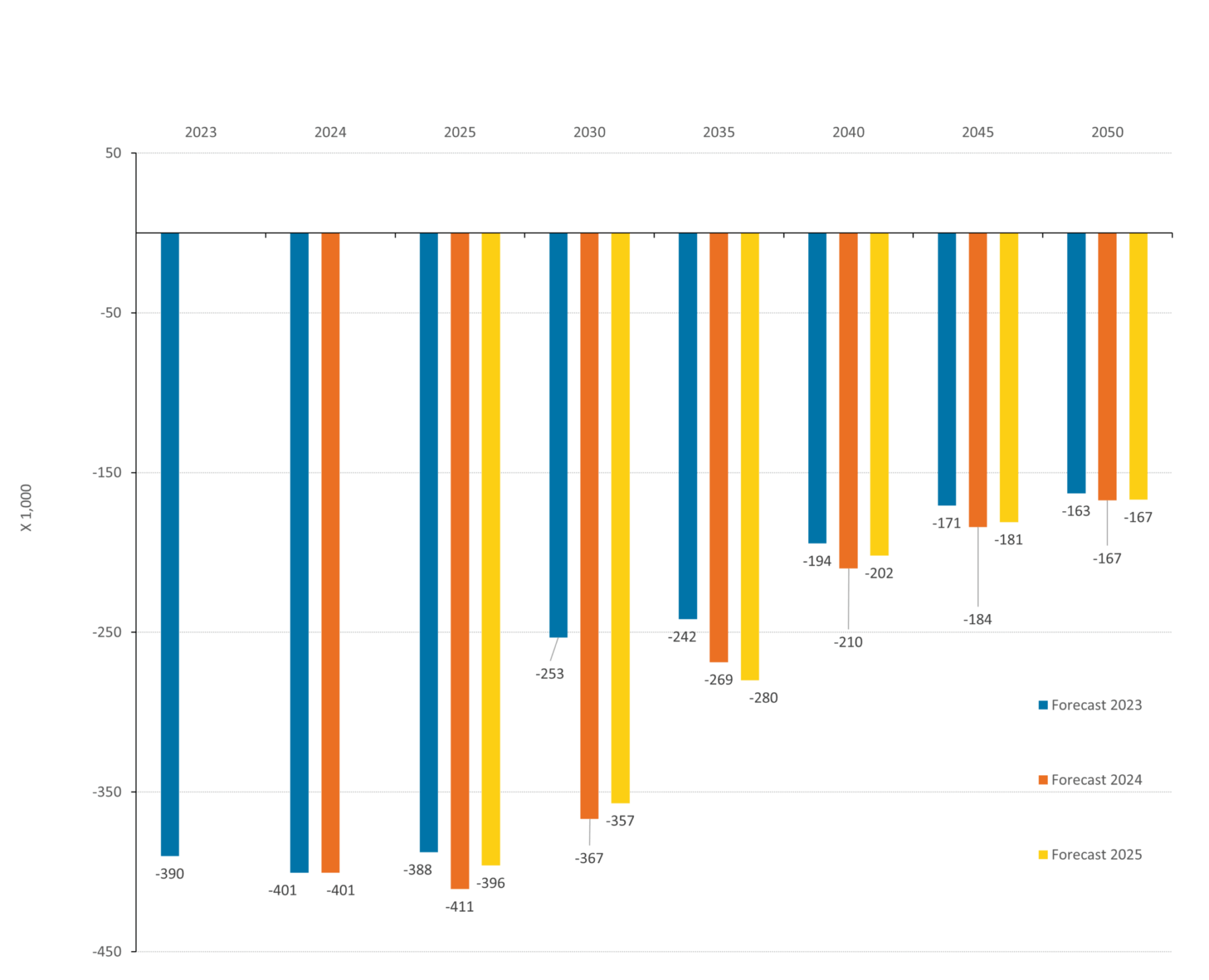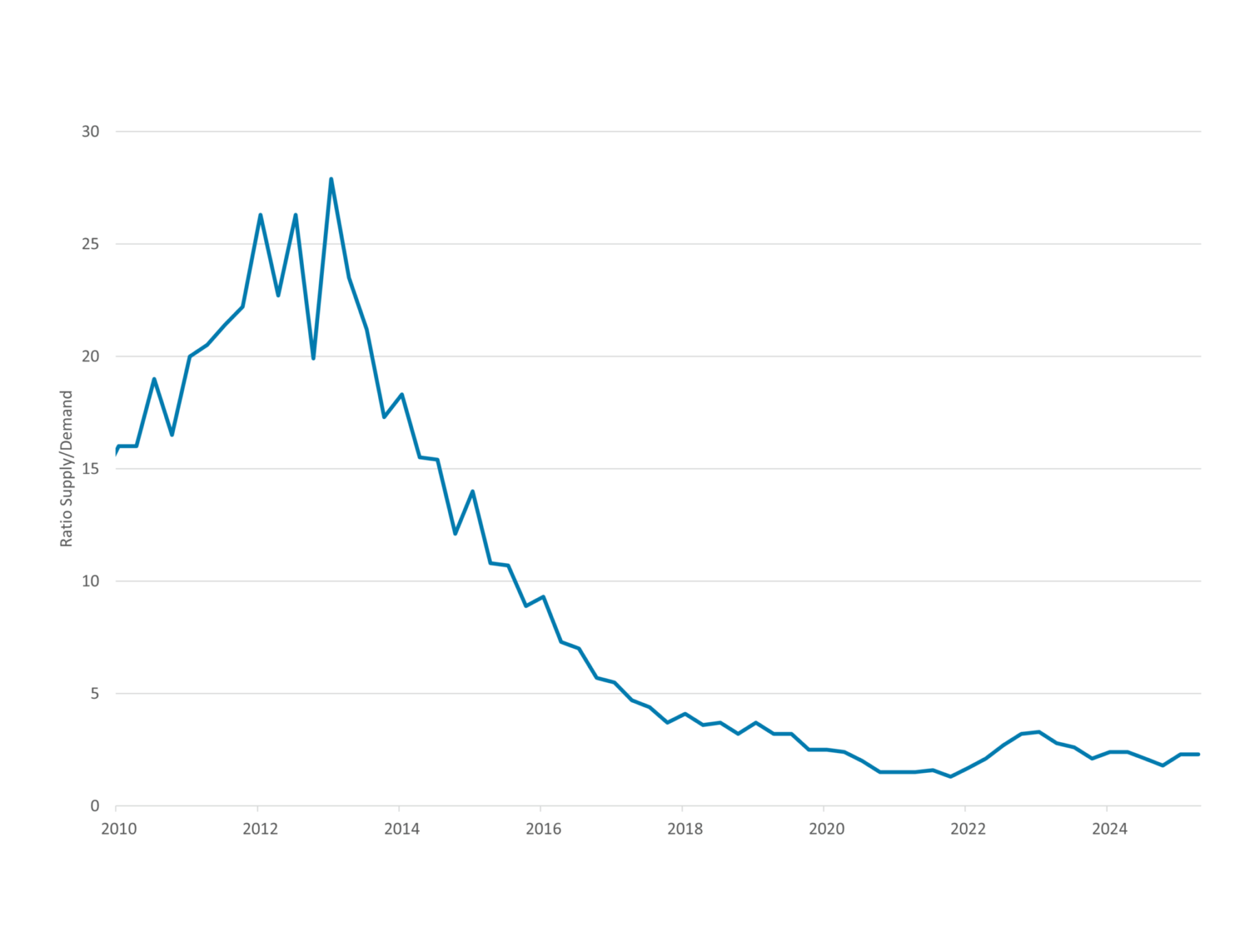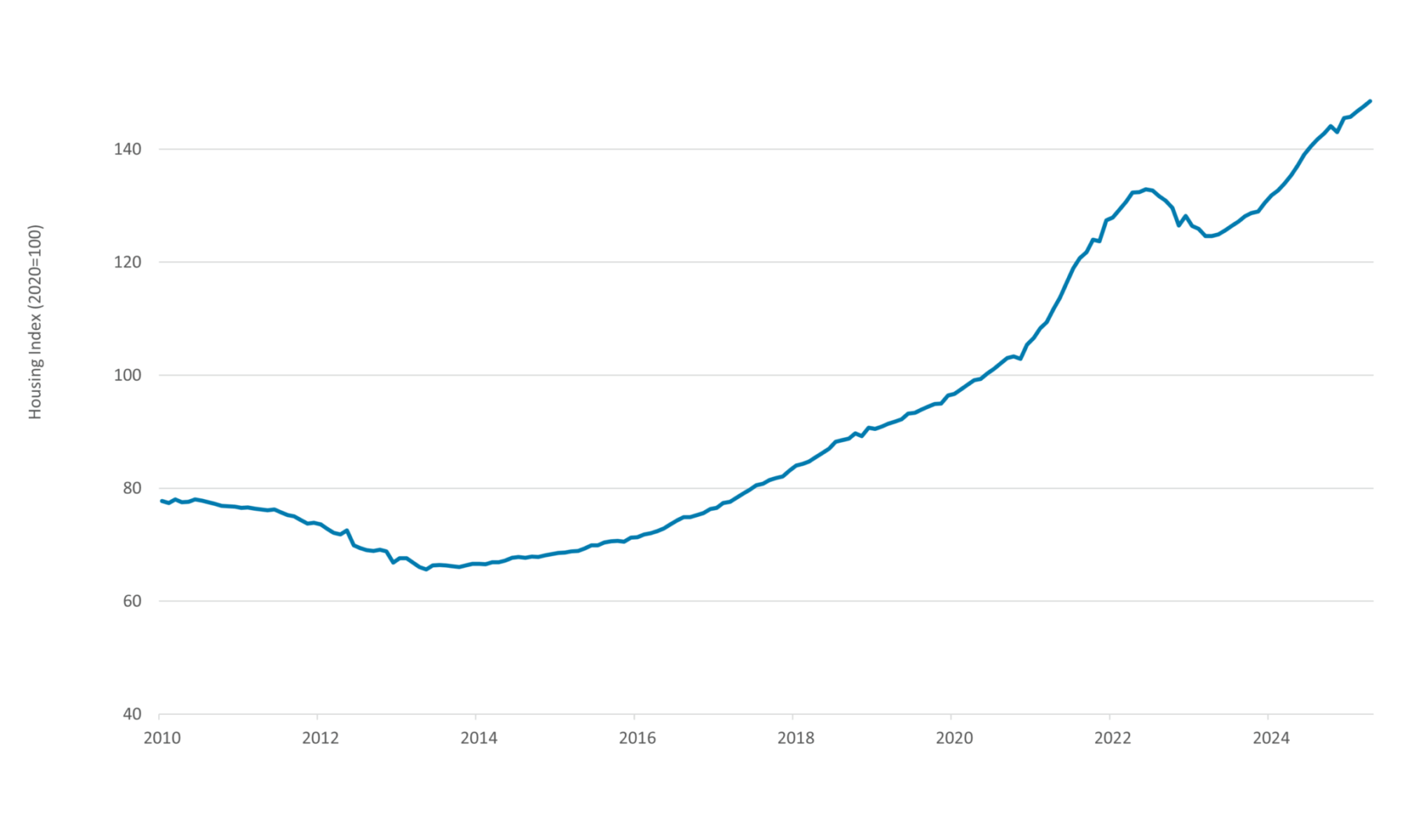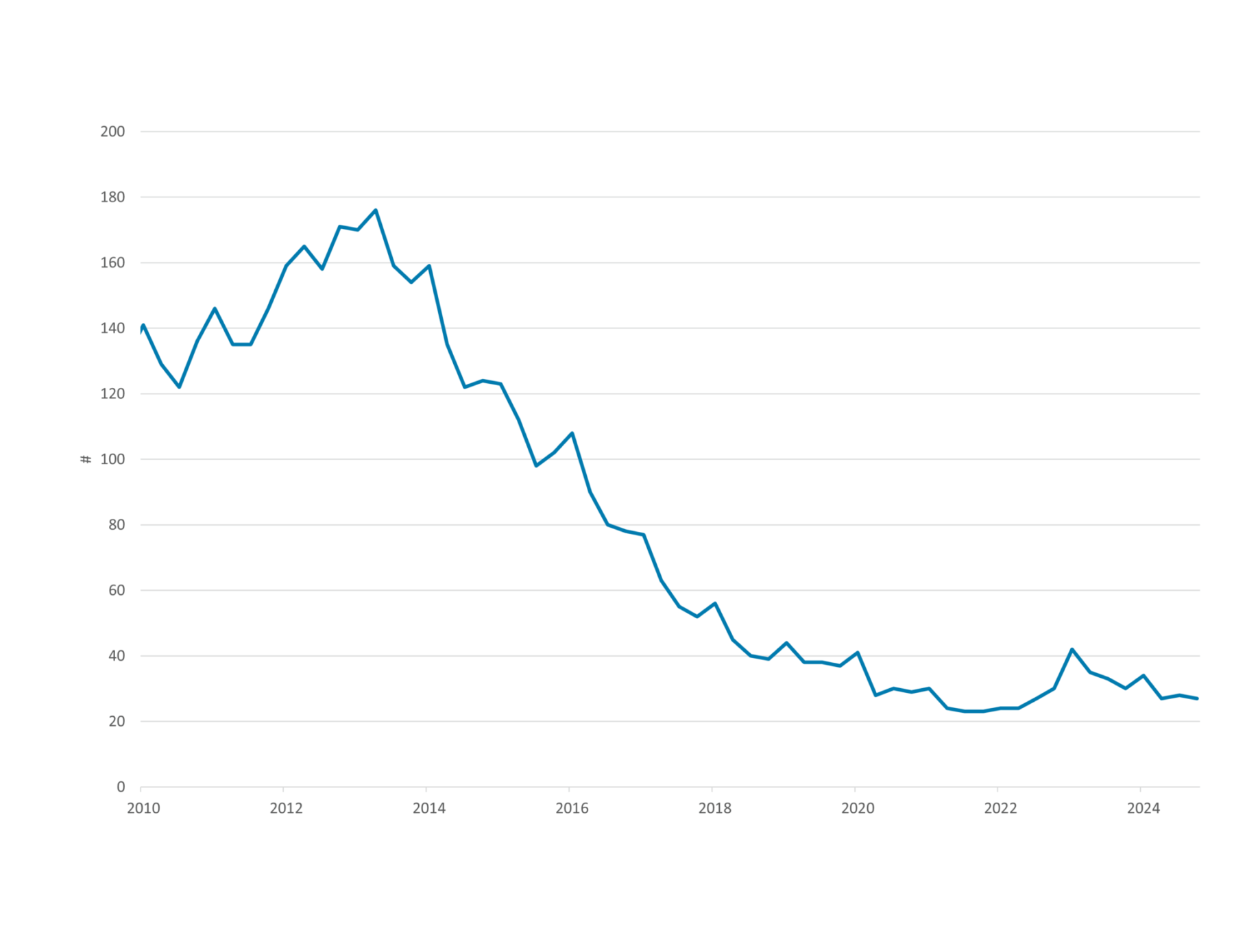- Persistent supply shortage: The housing shortage remains at -4.8%
- Q2 2025 saw a 22% increase in transactions and a 4% rise in prices, driven by regulatory shifts.
- 150,000 new homes planned by 2030
The supply shortage projection has not worsened
The persistent supply shortage in the Netherlands continues to be a key factor behind rising house prices. The outlook for the coming years has once again been updated, and at this point, the situation has not deteriorated further. In the figure below, we added the newest forecast of Primos. Based upon the declining forecasted figures of household growth in the Netherlands, the supply shortage has not worsened. On the other hand, we do not see an increase in new construction and the number of building permits issued. For the time being, we do not anticipate any changes, as the cabinet’s collapse in Q2 has put many plans on hold.
Currently, the housing supply shortage in the Netherlands stands at -4.8%, while the government’s target is -2%. The reasoning here is that with a housing shortage of two percent, there will still be some search and waiting times, so the housing market will not collapse, but it will also no longer be overheated. Additionally, the risk of things like unoccupied homes and deterioration increases if there is no housing shortage at all. To reach this goal, an additional 226,000 homes are needed to close the gap. Based on the projections below, the desired level is not expected to be achieved before 2045.
Figure 1: No worsening in predicted housing shortage

Source: Primos, DMPM analytics
Supply-demand ratio
The tightness indicator remains at the same level of 2.3 in the second quarter of 2025. This indicates that the number of choices for a potential buyer in the housing market has remained on the same low level.
Figure 2: Housing shortage indicator 1

Source: NVM
Housing transactions keep rising in the second quarter of 2025
In Q2 2025, NVM realtors sold 42,000 homes, marking a 22% increase compared to the same period in 2024. This growth is largely attributed to the Affordable Rent Act, which prompted many landlords to sell their properties rather than continue renting them out. The impact of this trend is most notable in apartment sales, which have risen by 23% over the past year.
House prices increased by 4% in the second quarter of 2025
NVM reports that home prices in the Netherlands continued to increase in the second quarter, with prices rising 4.0% and the average transaction price reaching € 495,000, marking a 6.2% increase compared to the same period last year. The Affordable Rent Act has also influenced the housing market, leading to a greater supply of smaller, lower-quality homes. This increased supply is slowing the rate of price growth, tempering the overall rise in housing prices.
Figure 3: House prices 1

Source: Statistics Netherlands, DMPM analytics
Overbidding Remains Standard Practice in the Housing Market
The proportion of homes sold above the asking price edged up in the second quarter of 2025, reaching nearly 74%, the highest level in the past three years. Despite this trend, housing supply continues to rise. Many sellers are now intentionally listing properties below their expected price to draw more potential buyers. On average, homes are sold for 5.6% above the asking price during the second quarter of 2025. The average time to sell a home remains very low at just 27 days, with 90% of all properties selling within a single quarter, a trend that has persisted since last year.
Figure 4: Average number of days needed to sell 1

Source: NVM
Housing market initiative by Minister of housing and spatial planning
In June 2025, outgoing housing minister Mona Keijzer launched an initiative to speed up housing development by designating 24 “doorbraaklocaties” across the Netherlands. A doorbraaklocatie is a site prioritized to overcome local delays and accelerate large-scale housing projects by removing regulatory obstacles, speeding up planning, and stimulating strong cooperation between government, municipalities, housing corporations, and developers. These locations are chosen for their potential to deliver homes quickly by breaking through traditional bottlenecks.
Each location is planned to deliver at least 2,500 homes, amounting to 100,000 to 150,000 units nationwide. Construction will start on at least five sites this year, with all projects required to begin no later than 2030.The initiative focuses on collaboration and, when necessary, government intervention under the Environmental and Planning Act to ensure projects keep moving forward, helping to address the urgent housing shortage.
Want to know more?
This article is the first chapter of our Quarterly market update for Q2 2025. In this report, we outline developments in the Dutch economy, the housing market and the mortgage market.

